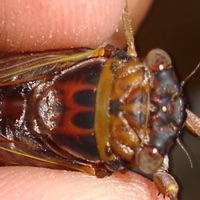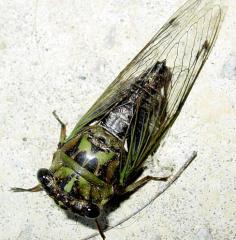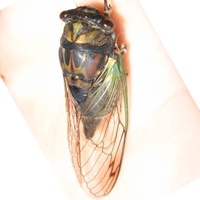Annual cicadas of Georgia (GA):
All cicadas appear every year unless otherwise noted.
Cicadettana calliope calliope (Walker, 1850) aka Southern Grass Cicada
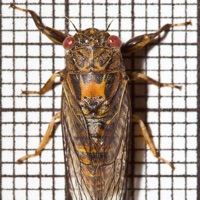
Cicadettana calliope floridensis (Davis, 1920)
Diceroprocta viridifascia (Walker, 1850) aka Salt Marsh Cicada
Megatibicen grossus (Fabricius, 1775) aka Northern Dusk Singing Cicada formerly Megatibicen auletes
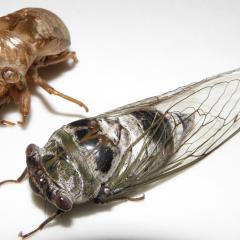
Megatibicen figuratus (Walker, 1858) aka Fall Southeastern Dusk-singing Cicada
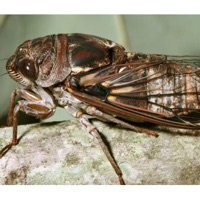
Megatibicen pronotalis walkeri Metcalf, 1955 aka Walker’s Cicada
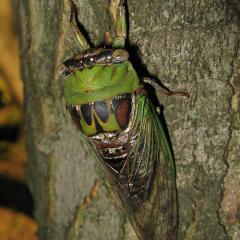
Megatibicen resonans (Walker, 1850) aka Southern Resonant/Great Pine Barrens Cicada
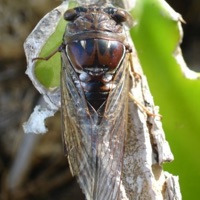
Neocicada hieroglyphica hieroglyphica (Say, 1830) aka Hieroglyphic Cicada

Neocicada hieroglyphica johannis (Walker, 1850)
Neotibicen davisi davisi (Smith and Grossbeck, 1907) aka Davis’ Southeastern Dog-Day Cicada
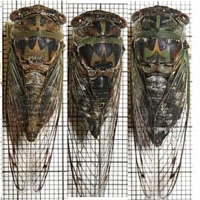
Neotibicen lyricen engelhardti (Davis, 1910) aka Dark Lyric Cicada
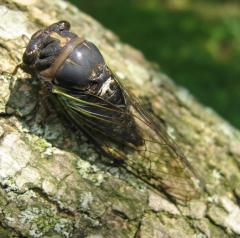
Neotibicen lyricen virescens Davis, 1935 aka Costal Lyric Cicada
Neotibicen robinsonianus Davis, 1922 aka Robinson’s Annual Cicada or Robinson’s Cicada
Neotibicen similaris apalachicola Marshall and Hill, 2017
Neotibicen similaris similaris (Smith and Grossbeck, 1907) aka Similar Dog-Day Cicada
Neotibicen tibicen australis (Davis, 1912) aka Southern Swamp Cicada
Neotibicen tibicen tibicen (Linnaeus, 1758) aka Swamp Cicada, Morning Cicada
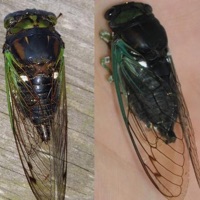
Neotibicen winnemanna (Davis, 1912) aka Eastern Scissor(s) Grinder
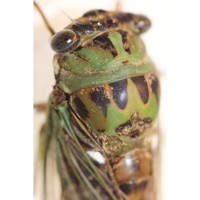
Periodcial cicadas of Georgia (GA):
Magicicada cassinii (Fisher, 1852) aka Cassini Periodical Cicada or 17-Year Cicada
These emerge next in 2025 (Brood XIV), 2030 (Brood II), and 2034 (Brood VI). Often they emerge 4 or 1 year earlier than expected.
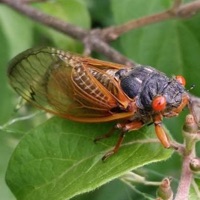
Magicicada septendecim (Linnaeus, 1758) aka Decim Periodical Cicada or Linnaeus’s 17-Year Cicada or 17-Year Cicada
These emerge next in 2025 (Brood XIV), 2030 (Brood II), and 2034 (Brood VI). Often they emerge 4 or 1 year earlier than expected.
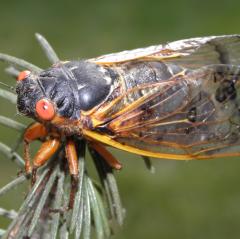
Magicicada septendecula Alexander and Moore, 1962 aka Decula Periodical Cicdada or 17-Year Cicada
These emerge next in 2025 (Brood XIV), 2030 (Brood II), and 2034 (Brood VI). Often they emerge 4 or 1 year earlier than expected.
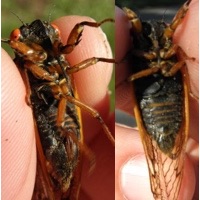
Magicicada tredecassini Alexander and Moore, 1962 aka 13-Year Cicada or 13-Year Cassini
These emerge next in 2024 (Brood XIX). Often they emerge 4 or 1 year earlier than expected.
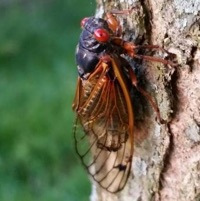
Magicicada tredecim (Walsh and Riley, 1868) aka 13-Year Cicada or 13-Year Decim
These emerge next in 2024 (Brood XIX). Often they emerge 4 or 1 year earlier than expected.
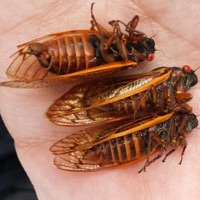
Magicicada tredecula Alexander and Moore, 1962 aka 13-Year Cicada or 13-Year Decula
These emerge next in 2024 (Brood XIX). Often they emerge 4 or 1 year earlier than expected.
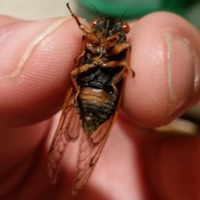
Related Articles
- Common cicadas of Georgia
- Periodical cicada Brood X (10) will emerge in 15 states in 2021
- Look & listen for Brood X Stragglers
- Neotibicen similaris apalachicola, a new cicada subspecies
- Brood VI 17-Year Cicadas Due in Spring of 2017
- Periodical cicada Brood XIV (14) will emerge in 2025 in Thirteen States
- Periodical cicada Brood XIX (19) will emerge in 2024 in Fifteen States
Name and Location References:
- Full Binomial Names: ITIS.gov
- Common names & locations: BugGuide.net; iNaturalist.com; The Songs of Insects by Lang Elliott and Wil Herschberger; my personal memory.
- Locations: Biogeography of the Cicadas (Hemiptera: Cicadidae) of North America, North of Mexico by Allen F. Sanborn and Polly K. Phillips.
- List of species with MAPs: Biogeography of the Cicadas (Hemiptera: Cicadidae) of North America, North of Mexico [PDF] by Allen F. Sanborn and Polly K. Phillips. Download it once; treasure it forever.
